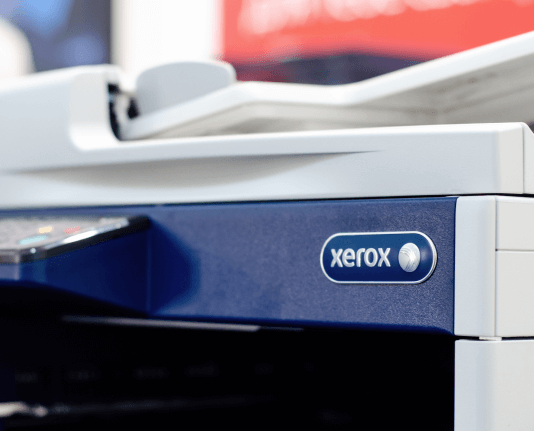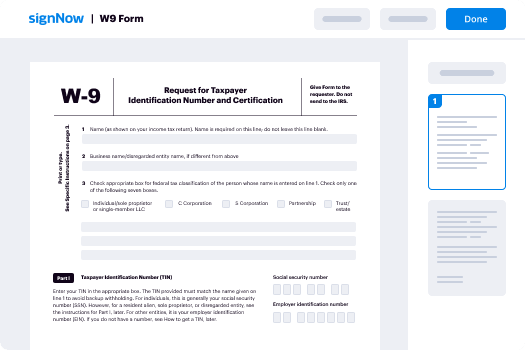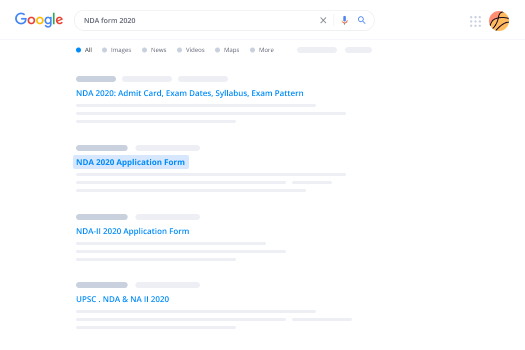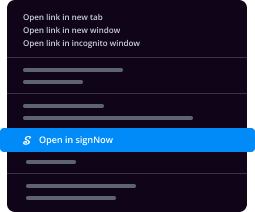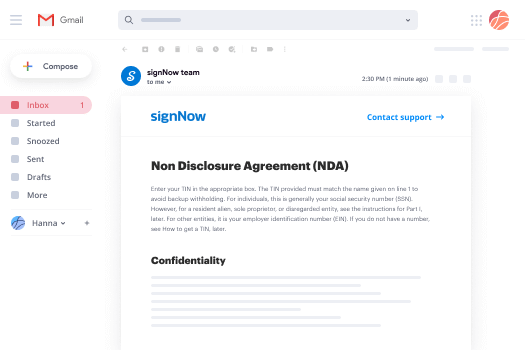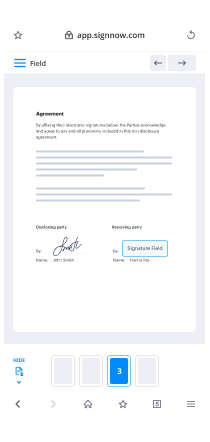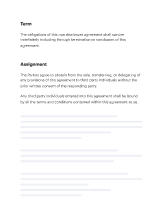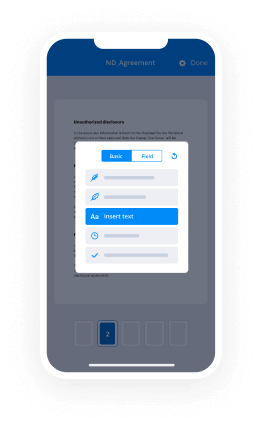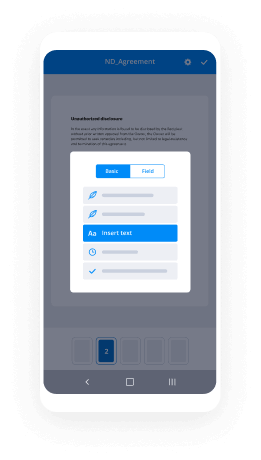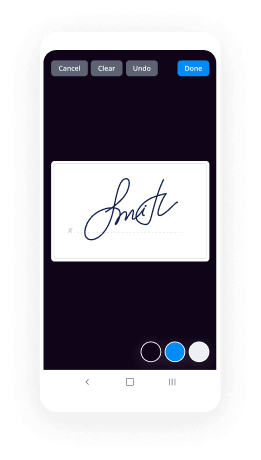How To Sign Document
Make the most out of your eSignature workflows with airSlate SignNow
Extensive suite of eSignature tools
Robust integration and API capabilities
Advanced security and compliance
Various collaboration tools
Enjoyable and stress-free signing experience
Extensive support
Keep your eSignature workflows on track
Our user reviews speak for themselves






Kindly demonstrate how to endorse a document and return it to the client
If you're seeking to optimize your document endorsement process, kindly demonstrate how to endorse a document and return it to the client using airSlate SignNow. This platform provides an effective means to handle eSignatures, ensuring that you can manage contracts and agreements effortlessly. With its intuitive interface and powerful features, airSlate SignNow is a superb option for enterprises of any scale.
Kindly demonstrate how to endorse a document and return it to the client
- Launch your web browser and go to the airSlate SignNow site.
- Establish a free account or sign into your current one.
- Choose the document you intend to endorse or need to send for signatures.
- If you require this document in the future, store it as a template for upcoming use.
- Open your document and make any necessary modifications by inserting fields or entering information.
- Insert your signature and add signature fields for your clients.
- Click on the 'Continue' button to configure and send your eSignature request.
To summarize, airSlate SignNow streamlines the procedure of endorsing and sending documents, offering an efficient solution that conserves time and resources. Its extensive features facilitate easy management of eSignatures, ensuring you remain organized and professional.
Prepared to elevate your document workflow? Register for airSlate SignNow today and discover seamless eSigning for yourself!
How it works
Rate to how document sign
-
Best ROI. Our customers achieve an average 7x ROI within the first six months.
-
Scales with your use cases. From SMBs to mid-market, airSlate SignNow delivers results for businesses of all sizes.
-
Intuitive UI and API. Sign and send documents from your apps in minutes.
A smarter way to work: —how to industry sign banking integrate
FAQs
-
How can I start using airSlate SignNow to sign documents?
To get started with airSlate SignNow, simply create an account on our website. Once registered, you can upload your document and easily sign it online. If you're wondering, 'please show me how to sign a document and send i back to the clientt,' our step-by-step guides and support resources are here to help you through the process.
-
What features does airSlate SignNow offer for document signing?
airSlate SignNow provides a range of features including document templates, real-time tracking, and team collaboration tools. These features make it simple to manage your signing process. If you need assistance, just ask, 'please show me how to sign a document and send i back to the clientt,' and we can guide you through the functionalities.
-
Is there a mobile app for airSlate SignNow?
Yes, airSlate SignNow offers a mobile application available for both iOS and Android devices. This allows you to sign documents on the go, ensuring you can manage your contracts anytime, anywhere. If you're looking for instructions, feel free to say, 'please show me how to sign a document and send i back to the clientt' for mobile-specific guidance.
-
Can I integrate airSlate SignNow with other applications?
Absolutely! airSlate SignNow seamlessly integrates with various third-party applications including Google Drive, Dropbox, and Salesforce. These integrations enhance your productivity and streamline your workflow. If you need help, just let us know, 'please show me how to sign a document and send i back to the clientt,' and we can provide detailed integration steps.
-
What are the pricing plans for airSlate SignNow?
airSlate SignNow offers flexible pricing plans to suit different business needs, starting from a free trial to premium subscriptions. Each plan includes features that help you efficiently sign documents. If you’re interested in signing up, simply ask, 'please show me how to sign a document and send i back to the clientt,' and we can guide you through selecting the right plan.
-
Are there any limits on the number of documents I can sign?
With airSlate SignNow, there are no limits on the number of documents you can sign, especially with our premium plans. This feature is designed to accommodate businesses of all sizes. If you have specific queries about usage, feel free to ask, 'please show me how to sign a document and send i back to the clientt,' and we will provide the details.
-
How secure is the signing process with airSlate SignNow?
Security is a top priority at airSlate SignNow. We utilize advanced encryption and compliance protocols to protect your documents and data throughout the signing process. If you seek assurance on how to use our platform safely, just mention, 'please show me how to sign a document and send i back to the clientt,' and we can share our security measures.
-
How do Quakers function in modern society if their beliefs don't allow them to sign documents?
Uh, yeah, I sign documents, we all sign documents, as far as I know. There's an old painting of a newly married Quaker couple signing their "Quaker" marriage certificate, that is well-known. Maybe you got this idea from the old custom of Friends using special kinds of Quaker marriage documents to record marriages in days of old? In fact, one might notice that putting testimonies in writing, and creating epistles, has long been a Quaker practice. Just in general the idea of keeping written records, meticulous written records is inherent to Quaker culture, so this idea of not signing things doesn't line up. So, if there is a group or individual among the Society of Friends who insists on not signing documents, this is the first I have heard of it and I'd love to hear more. Signed Friend Laura!
-
How much do signed documents cost in the signNow and Echosign APIs?
I do not know of a single of the %3E 100,000 EchoSign enterprise customers that pays %3E $2 per agreement. If your usage isn't super large, just sign up for the Enterprise edition ($299-$399/month), get an API key, and stay within fair use limits, or talk to a sales rep and pay less than that.
-
When someone dies they are no longer around to sign documents. How do they voluntarily surrender all rights, title and ownership
If the question is about how title is transferred upon death, well, voluntariness has nothing to do with it. The property passes according to law, as dead persons cannot own property. (Their estates can, temporarily, but the decedent themself is not really part of the equation at that point.) So once the person is dead, the rights to their property, including financial accounts, will be in someone else. As for who will end up with those rights, “Trusts and Estates” is an entire class in law school. (This answer will necessarily be confined to generalities, and to American law.)There are several things that can happen to property upon the death of the owner.A property interest may be “with right of survivorship.” If the property is held “by the entirety” (this device is only available to married couples), the entire interest in the property will pass to the spouse with no further ado. The spouses each have an inchoate, joint, interest in the property so long as they are both alive, and the consent of each of them is required to alienate it. Likewise, if the property is held “jointly, with right of survivorship” with anyone, the decedent’s interest in the property will pass to the designated survivor(s) with no further ado. Joint tenancy, in the specific context of bank accounts, normally provides any of the co-tenants with the immediate use of any and all funds in the account, subject to a theoretical right of accountingA “contingent” interest in property may be payable to someone on the death of the decedent as a matter of either contract law (such as a life insurance policy) or by a deed so specifying (often a deed reserving a “life estate” in real property to the decedent with the “remainder” to a beneficiary). Pension annuities are also usually structured like this. The occurrence of the specified event (the death) creates the property interest in the beneficiary. The strength of the beneficiary’s future interest varies by how the arrangement was created in the first place.Property that is owned by the decedent outright that is neither subject to a contingent interest on death (i.e. it is “in fee simple”) nor to a type of cotenancy that implies survivorship (it’s possible to hold a partial interest in property that is not a joint tenancy with right of survivorship) will pass to the decedent’s estate upon death. This also includes choses in action (inchoate rights that must be sued for), intangible property, or contractual rights to the extent that no designation of a contingent beneficiary is made.Once an estate is created, it needs to be disposed of, or transferred to other non-deceased persons, as is provided by law. If the decedent has left a will, the local jurisdiction’s laws relating to wills will control the effect of any devise made in the will, but typically a validly made and executed will is controlling as written. If there is no will, the state will have a statute providing for an ‘intestacy’ scheme. Normally this distributes the decedent’s property, in descending order of priority, to (1) creditors, (2) estate taxes, (3) any surviving spouse, (4) children of the decedent, (5) parents, siblings, or other relations of the decedent, (6) the state itself, if no persons meeting the other criteria can be found. The exact provisions vary widely from state to state.Someone needs to be appointed to administer the estate, or take charge of the property and accomplish distribution to creditors, heirs, or beneficiaries. If such a person is nominated in the will, they will be called executor, or, sometimes the feminine, ‘executrix,’ may be used. If no executor is nominated, or if the executor duly nominated is unavailable or unwilling to serve, someone else, called an ‘administrator c.t.a. (cum testamento annexo)’ will be appointed. An administrator of an intestate’s estate will be appointed by the court on application of any interested party. Most administrators are spouses or children of the decedents, although they do not have to be; occasionally if a small estate is signNowly burdened by a lien or other signNow claim by a creditor, the creditor’s lawyer or other agent will be named administrator.Either an executor/-trix or an administrator/-trix is called more generically a ‘personal representative,’ and upon appointment has most of the same powers over the estate’s property that the decedent would have had if still alive. So I believe this is the first answer to your question—the person who is put in charge of the estate would take care of the ‘financial accounts’ if they were not joint to begin with. The personal representative, however, is bound by the terms of the will or the intestacy statute and any disposition must be consistent with those provisions.Now perhaps the question was how can this all be avoided. This, too, is a fairly substantial area of law not easily summarised into a thousand-word answer on Quora, but there are several ways of doing this, all of which involve an ‘inter vivos’ (amongst the living) transfer by the original owner before their death. Such a transfer must be voluntary, or authorised by a durable power of attorney or a guardian of the estate.Property can be split into life estate and remainder, or put into some form of joint tenancy, so that it will pass automatically. The knowing assent of the original fee owner is always required for this type of arrangement to be created, because some of the proverbial bundle of sticks are being transferred even if others are retained.Some people, contemplating death, will just give property to their beneficiaries outright. This is not always a good idea.Some states allow expedited administration of small estates or those where there is a single beneficiary, such that the property will pass directly to the heirs without the necessity of formal administration.Sometimes a property owner will convey the property to what is called a trust, which is a semi-perpetual legal entity that may exist for the specified purpose of holding and managing property. The trustee is the person in charge of the property; the cestui que truste or beneficiary is the person for whose benefit any expenditures are to be made. Passing property to a trust will remove it from the realm of probate court (although trusts are generally subject to continuing court supervision as a matter of law if any mismanagement is alleged); the terms of the trust may be similar to those of a will in providing that the property is to be used by the decedent until death and then distributed to others or held for their future use. (Trusts for the care of minor children are common among wealthy people.)Someone facing an imminent disability may make a power of attorney, which grants another person the right to manage their property and to make other decisions in their stead. The power of attorney must be specified as ‘durable’ if the competency of the maker has deteriorated. A power would allow the attorney-in-fact (the agent) to make disposition of the property in contemplation of imminent death or for other good-faith reasons, prior to the death of the maker. However, a power of attorney expires upon death and an attorney-in-fact does not automatically become a personal representative. A court will only supervise an attorney-in-fact if someone files an appropriate action demanding accounting.If the person has already become incompetent without doing any of this, someone may petition the court to appoint a guardian of the person and/or of the estate. The guardian of the estate has more-or-less the same powers as the attorney-in-fact appointed by a voluntary power, but will be required to report any transactions to the court that appointed them.Quite aside from the mechanics of property transfers, taxes and Medicaid are concerns. Some inter vivos transfers in the nature of inheritance will be treated as such for the purpose of taxation, and as death is often preceded by a lengthy and expensive course of medical treatment, a good estate planner will also be familiar with the rules involving public assistance, medical providers’ rights to liens on property, and so forth, and will be able to analyse the various ways in which some of these schemes will interplay.At any rate, for advice on how any of this might play out in a specific case, or for estate planning advice, you should seek the services of a lawyer in your jurisdiction who does this sort of work.
-
How has the ability to sign documents online changed the game for the banking, insurance and real estate industries?
The introduction of on line signatures is found money for corporations and disastrous for those who don’t understand the commitment they make so easily. Check on an agreement with a mentor before you sign and if there is urgency around a deadline run for yourlife!
-
If someone has an image file with my signature on it, how much trouble can that get me in? What can I do to prevent them using i
Answer provided based on comment exchange above:Nowadays, people routinely exchange documents with images of signatures on them countless times every day.As an example, virtually all of the agreements that I help clients enter into are exchanged electronically with images of signatures, almost none with ink-on-paper signatures.To the best of my knowledge, there has been no widespread problem with such signature images being used inappropriately, either for my clients or for anyone else providing such images.Given that you do not have any reason to believe that the recipient of your signature image will behave inappropriately, you should not worry about that happening - there is nothing for you to do to prevent misuse.If the tecipient were to use your signature inappropriately, such use (under applicable laws in the U.S.) probably would constitute forgery, subjecting the recipient to civil and criminal liability, as would be the case with pen-and-ink forgery.
-
How do I make a document self-attested? Can someone please post a picture to show how to sign on a document to make it self-atte
Hello,Self attested document. You don't need any picture to understand this.1.Take xerox of your original PAN (for example)- both front & back sides on a foolscap white paper on one side.2.Sign at the bottom of these 2 images on that white paper.That's it…..you are done. You have self attested document of your PAN. Isn't it simple?
-
How does an LLC that is a sole member of another LLC sign documents?
I have seen LLC signatures of this sort (LLC whose sole or managing member is another LLC) that go down four or five levels.Here is a two-level (as in this question) example (subject to Quora formatting limitations):TOP COMPANY LLCBy: SOLE MEMBER LLC, Managing MemberBy: ___________________ John Doe, ManagerSo, John Doe signs as the Manager of SOLE MEMBER LLC, which is the Managing Member of TOP COMPANY LLC.
Trusted esignature solution— what our customers are saying
Get legally-binding signatures now!
Related searches to to document how sign
Frequently asked questions
How do i add an electronic signature to a word document?
How to use electronic signature paint?
How to sign up with e-pickmeup?
Get more for sign how to document
- How To Sign Iowa Charity LLC Operating Agreement
- Sign Kentucky Charity Quitclaim Deed Myself
- Sign Michigan Charity Rental Application Later
- How To Sign Minnesota Charity Purchase Order Template
- Sign Mississippi Charity Affidavit Of Heirship Now
- Can I Sign Nevada Charity Bill Of Lading
- How Do I Sign Nebraska Charity Limited Power Of Attorney
- Sign New Hampshire Charity Residential Lease Agreement Online
Find out other sign document to how
- Customs form 5291
- Va form 9 appeal to board of veterans appeals
- Non borrower credit authorization form 100266368
- Police clearance certificate application form
- Mv278roster 2011 form
- Ta6 2013 2019 form
- Nz superannuation application form
- Research request form
- Nics enrollment form
- Go ahead london application form
- Claimant request for appeal of unemployment insurance missouri labor mo form
- Dv 200 2013 form
- Table of heirs form osc state ny
- Sworn statement for contractor and subcontractor to owner and to the chicago insurance company form
- Special requirements information form carnival cruise lines
- Award notification commission in kansas city form
- Mohegan win loss 2014 2019 form
- Vehicle lease agreement form
- Form ud 11 2014 2019
- Prescription drug prior authorization form providence health plan healthplans providence

